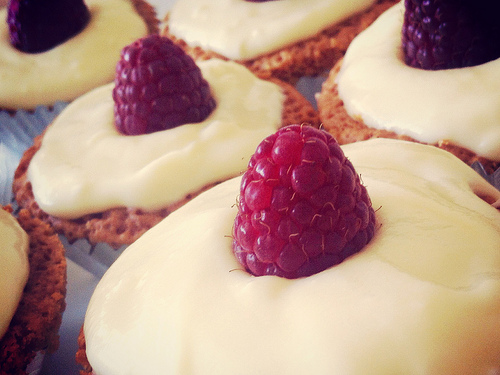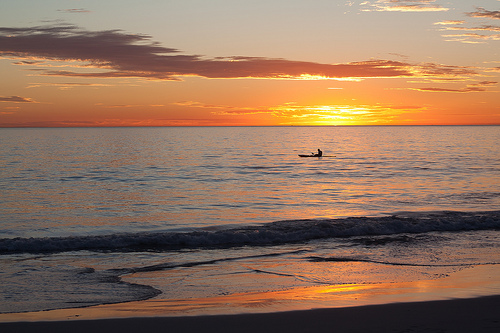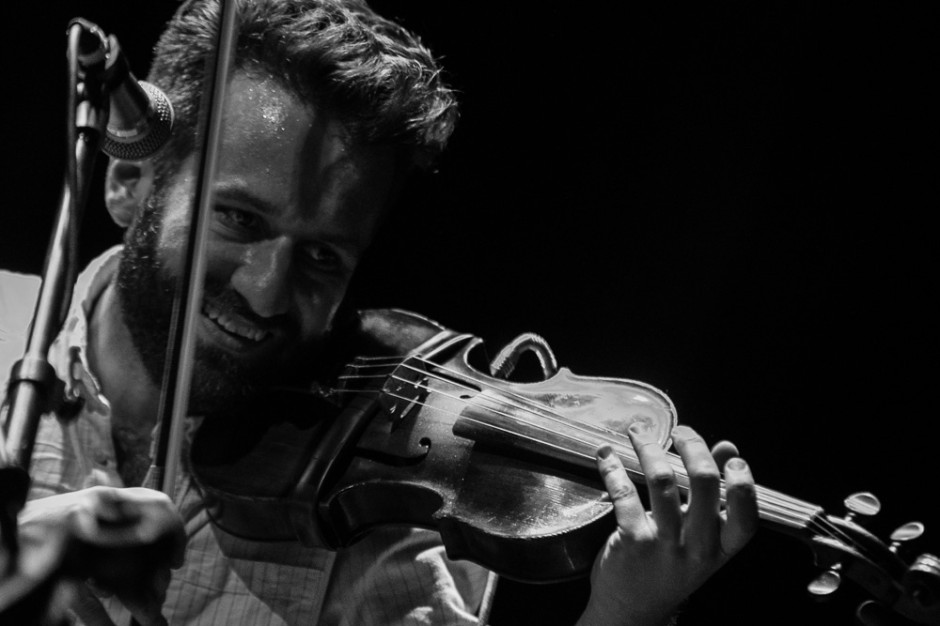Congratulations on your gorgeous new camera! There are four things that you can start doing straight away to take better photos. Are you ready?
Can I use this photo I found on the Internet?
(Or, the non-photographer's guide to image use) It's a truth universally acknowledged that articles, newsletters, blog posts, posters, and basically anything involving blocks of text can be improved upon by the addition of an image. When you're writing about the local cycling club's criterium or producing a short introduction to crochet and macrame, you'll probably want some pictures to illustrate events or to explain techniques alongside your race report or detailed how-to. Can you take a look at the site of a local photographer and use some of his images from the cycle race? Can you conduct a Google Image Search for 'crochet' and download some photos of great examples of people's work?
The short answer is always 'No'. Just because someone has posted an image on the Intergoogles, it doesn't mean that it is free for other people to use. You can't use the china in John Lewis' window display without paying for it first, and a photo on Flickr is just the same. Images belong to the people who create them—or in some circumstances, to their employers—so they get to decide how and when they can be used and what the appropriate fee for using them is. We put them on our websites or on photosharing sites because we're proud of our work and we like to display our capabilities, but it's not an open invitation to filch them.
There are a few exceptions to this rule, but until you know better, work under the assumption that every photographer keeps the tightest control over the use of all of her or his images. Being confronted by an angry photographer wielding an invoice for unauthorised image use is not a pleasant situation, so remember: You can't use other people's photos. Mmm'kay?
For completeness, what are these exceptions you talk of?
Some people are happy to licence their images under Creative Commons terms. Creative Commons licences aren't designed as an alternative to traditional copyright, but a complement. They're easy-to-use copyright licenses that allow you permission to use a photographer's images under terms decided by the photographer. One photographer might let you modify and use his images commercially, but another might say that her images must be attributed, cannot be used commercially, and aren't to be modified. However, not all photographers use Creative Commons terms (you'll see it close to the photo if they do) and if there's no evidence of a Creative Commons licence, assume that you can't use the image.
If you receive an image in a press release or it's made available to you from the press section of a website, this will be free to use in the context of the product or situation. For example, when Olympus releases a new camera, it will make a bundle of images illustrating it available to me. Provided that I'm writing about that camera, I'm free to use them in an article. The National Portrait Gallery will supply a selection of images from each of its exhibitions so that if you're reviewing it or publicising one, you have photos to illustrate the article. But, you can only use those photos in relation to the relevant exhibition and they must be attributed under the terms set out by the NPG.
Some news agencies, for example AFP, are happy for you to use their photographers' images non-commercially and for personal use provided that you credit the photographer and agency and link back to the site. But, some agencies aren't. And you wouldn't want to face the wrath of AP or Reuters. Again, unless you're absolutely certain, assume that an image isn't free to use.
But what if you see an image and want to use it? What should you do?
Get in touch with the photographer! Most of us make it easy to send an email: do just that. We don't bite. Mostly. Tell us who you are, why and how you'd like to use a photograph that we've taken, and ask if you can come to an arrangement. The worst that we can say is 'No'.
That's not so hard, is it?
Aspiring young food photographers, get your entries in to Pink Lady competition!
Aged 17 or under? Love taking photos of food? Pink Lady (yes, those very same pink-skinned apples) have a competition for you! It runs between today and 31 Janaury 2014 and the panel of judges includes David Loftus (Jamie Oliver's food photographer) and Yotam Ottolenghi (one of my favourite chefs). Any photograph that features food is fair game: food in the field, food in preparation, or food on a plate and you need to be 17 or under on 31 January 2014 to be eligible. The entire category has been divided into three age ranges: 15 to 17, 11 to 14, and 10 and under.
If you win your category there's a trophy to mark your success and vouchers towards new camera kit to celebrate it. Your photo will also go on display at an exhibition at the Mall Galleries in London in spring next year along with the finalists from the adult categories.
There are some specific entry requirements for your images, for example they can't be posted on social media networks or have been entered in any other competitions, so please do read the conditions carefully. And whilst the adults might have to pay to enter their categories, there're no fees for the youth competitions. You can also be anywhere in the world to submit an entry. Last year's overall winner came from Romania.
You can have a look at last year's winning and commended photos to see what you're up against, but what do you have to lose? It sounds like a tasty competition to me!
Haje's review notes: Canon EOS 6D
After Photocritic editor Daniela came and showed me her shiny new camera - the Canon EOS 6D - I was gobsmacked. I have used my Canon EOS 5D for a while, and for quite a long time, I had been extremely happy with the photos, but living with this nagging feeling that there was something 'off' about the 5d. As soon as I picked up the 6D, I realised what it was. The Canon EOS 5D mark III is an astonishing piece of kit. The low-light capabilities are out of this world, it takes incredible photos, and the controls are so natural that it is probably the camera body I've gotten used to the fastest. It's a masterpiece of electronics and design. However, as I discovered when I first held its baby brother, it's too large.
This may come as a surprise to someone who's met me. I'm a tall guy (around 6'4" / 196 cm or so), and I have freakishly large hands. But, when I was writing a lot of books about photography, I forced myself to use entry-level cameras - not because I particularly wanted to use them, but because one of the key things I make in my books is that equipment doesn't really matter. That is very, very true, up to a point -- but given that most of my books are written for beginners, I had to 'eat my own dogfood', as they say: I figured it wouldn't make any sense to use a 5D mk III and then sing the praises of entry-level SLR cameras.
Anyway: Last night, I did my first gig with the Canon EOS 6D, and ran into the first time where the 6D fell short. With the 5D, you can take gorgeous 22-megapixel shots in raw all day long; I never ran into a full buffer. On the 6D, however, I ended up missing several of the shots at the concert due to the camera's buffer being full.
I can't quite convey my disappointment: The 6D is a perfect camera for me in so many ways. I love the 20 megapixels, I love the ergonomics, I love the fact that it's a lot smaller and a bit lighter than the 5D. I like that it has GPS built in (great for travel photography!). I suppose it's naïve to think that any camera can completely replace a camera that's £1,000 more expensive.
Despite this one minor hiccup, I do still think I'll end up selling my 5D mk III. In the end, the consideration is this: How often do I take concert photos (not that often), and how often do I travel and take photos (frequently). The lighter weight, smaller size, and built-in GPS are worth more to me than being able to go all rapid-fire at a gig. And, of course, there's a way of dealing with this shortcoming, too: Become a slightly better photographer, and be a little bit more selective about the photos I take.
See the full gallery of concert photos taken with the 6D over in my Flickr set!
Crazy or sensible? A full-frame sensor in a smaller-sized body.

Same-same-but-different? How about the 5D MkIII's sensor, in a smaller body?
Sometime yesterday, a couple of articles on a rumoured smaller-sized Canon camera with a full-frame sensor popped into my news feed. Most of yesterday was spent writing, not reading, and I didn't get the chance to pay much attention to them until this morning.
The gory details of the camera are themselves interesting: it would be smaller and lighter than a 5D MkIII, with a mostly plastic construction and possibly a pop-up flash. It'd have a 19 point auto-focus system, a sensitivity range of ISO 100 to 51,200, and 22 megapixel full-frame sensor.
But what actually interested me more was F-Stoppers' reaction to this potential new camera:
Canon Rumors has said that an entry level full frame doesn’t make sense, and though affordable access to the 5D MKIII sensor is tantalizing, I kind of agree. A full frame sensor isn’t really necessary for most of the photographers out there and may just be an attempt to move emphasis away from megapixel count and grab a few more of those consumer dollars that drive the company.
Really? You reckon that there are photographers out there who wouldn't be seriously interested in a camera that has a full-frame sensor, but is smaller and lighter than a 5D MkIII. Sure, Canon would have to get this camera absolutely right, but hell, I'd love a full-frame sensor in a body that I didn't need a small trailer to transport.
You see, I like this idea of having choice. My reasons for choosing to use a camera that isn't classically categorised as 'Pro' or 'Prosumer' aren't necessarily dictated by whether or not I'm scared of all the knobs and levers on one, or whether or not I think I need to be able to shoot lots and lots of frames per second, or whether or not I'm wooed by all those extra megapixels. One of them is size and weight. The other is cost. There are certain elements in a camera that I'm prepared to sacrifice for others, but if I'm offered a camera that closer meets my wish-list, then so much the better.
Ideally, I'd like some kind of identi-kit camera, where I could pick and choose the elements that are most important to me. The progressive scale where you have more of everything in each iteration doesn't necessarily meet my needs. Of course, in some respects, it goes with the territory; increase one factor and it automatically increases another. Still, wouldn't it be great to have a camera that meets your specifications? If that's even a possibility, it's a long way off. But until then, Canon offering a variation on a theme is a good thing, in my opinion.









